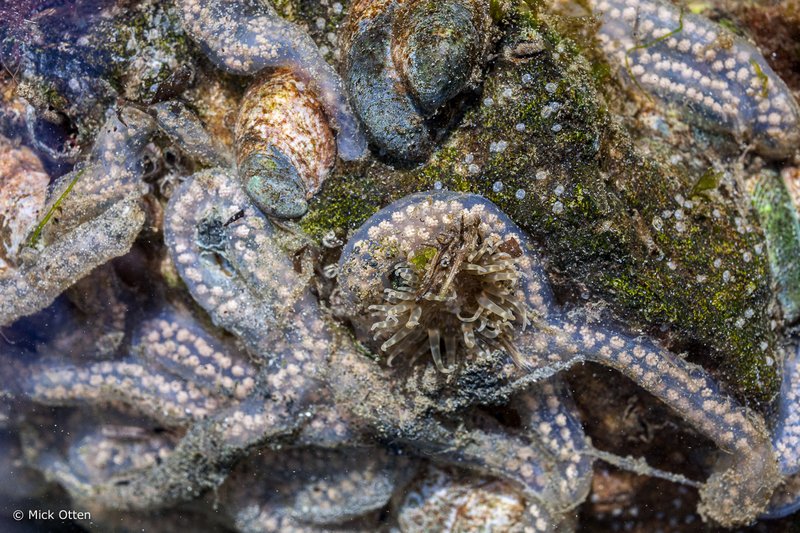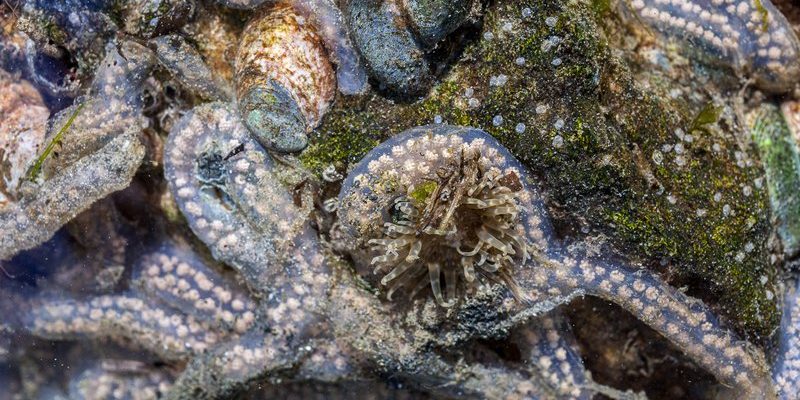
Bootlace worms, scientifically known as *Lineus longissimus*, are remarkable for many reasons, including their incredible length—some can grow up to 55 meters! Imagine that, a worm longer than a blue whale! However, their unique characteristics extend far beyond just size. Understanding their lifespan gives us insight into their ecology and the ecosystems they inhabit. So, let’s explore the natural habitats of bootlace worms and discuss what we know about their lifespan in the wild.
What are Bootlace Worms?
Before we dive deeper into their lifespan, it’s helpful to get a clearer picture of what bootlace worms actually are. Bootlace worms belong to a group called nemerteans, which are known for their long, slender bodies and unique feeding habits. Think of them as the superheroes of the ocean floor, stealthy and efficient predators. They primarily feed on small crustaceans and other invertebrates by extending a specialized proboscis to catch their prey.
Additionally, bootlace worms are known for their incredible regenerative abilities. If they lose part of their body, they can regenerate it. This adaptability might play a role in their overall lifespan, allowing them to survive various environmental challenges.
Just based on their appearance and behavior, it’s little wonder why bootlace worms have captured the attention of researchers and marine enthusiasts alike. Their fascinating characteristics connect to their lifespan, offering insights into how they thrive in their natural environments.
Factors Influencing Lifespan
When it comes to understanding the lifespan of bootlace worms, many factors come into play. One major aspect is their **environment**. Bootlace worms are typically found in coastal waters, often residing in sandy or muddy substrates. The quality of their habitat can significantly impact their lifespan. For instance, a clean, nutrient-rich environment allows them to thrive, while polluted waters might reduce their chances of survival.
Another vital factor is **predation**. Like any other creature, bootlace worms have predators. Animals such as fish, crabs, and even other invertebrates might see them as a tasty meal. Higher predation pressure can lead to a shorter lifespan, especially for younger worms who are still developing. It’s a brutal reality, but it’s part of the natural cycle of life.
Lastly, **food availability** plays a crucial role in how long bootlace worms live. In environments where food is plentiful, these worms can grow larger and potentially live longer. Conversely, in areas where food is scarce, their survival could be compromised.
Average Lifespan of Bootlace Worms
So, how long do bootlace worms actually live? While it can be challenging to pinpoint an exact lifespan due to various environmental factors, many researchers estimate that bootlace worms can live anywhere from **5 to 10 years** on average. This estimate varies based on the factors we’ve already discussed, including habitat quality, food availability, and predation pressures.
Interestingly, some reports suggest that in specially protected environments, their lifespan could even extend beyond 10 years. Imagine that! Living a whole decade while remaining a mysterious underwater wanderer. True longevity like this highlights the resilience of bootlace worms in suitable habitats.
This lifespan can be compared to other marine organisms. For instance, certain species of fish might only live for a few years, while some deeper-sea creatures can live for much longer, sometimes beyond a century. Bootlace worms, with their moderate lifespan, hold a unique position in the marine food web.
Life Cycle of Bootlace Worms
Understanding the life cycle of bootlace worms gives us further insight into their lifespan. Their life cycle typically begins with a fertilized egg that hatches into a larval form known as a planktonic larva. This larval stage is akin to a baby bootlace worm floating through the ocean, seeking out a suitable habitat to settle down.
Once they find a suitable home, they grow and develop into adult worms. The rate of growth can vary significantly, depending on the environmental conditions they encounter. In optimal conditions—think clean water and ample food—bootlace worms can grow quickly. In contrast, in harsher environments, their growth would slow down, potentially affecting their lifespan.
As they mature, bootlace worms reach sexual maturity. They reproduce by releasing eggs and sperm into the water, continuing the cycle. This connection between their life cycle and lifespan is essential—it influences how long they can live and thrive in their habitats.
Reproductive Strategies
When bootlace worms reach maturity, they employ fascinating reproductive strategies. These worms are typically hermaphrodites, meaning they have both male and female reproductive organs. This allows them to mate with any other adult worm they encounter, maximizing their chances of reproduction.
During mating, they exchange sperm, and later, they release fertilized eggs into the water. Depending on environmental conditions, they may produce a significant number of eggs, which can help ensure that some will survive despite the dangers they face in their habitat. This reproductive strategy is essential for maintaining their population and ultimately impacts their potential lifespan.
Conservation and Habitat Preservation
Given their intriguing lives and ecological importance, conserving bootlace worms and their habitats is crucial. As with many marine organisms, pollution, habitat destruction, and climate change pose significant threats. Maintaining clean waters and healthy ecosystems can positively impact their lifespan.
Support for marine conservation efforts, such as protected areas, can help foster conditions where bootlace worms can thrive. By safeguarding their habitats from pollutants and destructive practices, we can help ensure that these remarkable creatures continue to play their vital roles in the marine food web.
Additionally, public awareness can drive change. By sharing knowledge about bootlace worms and their habitats, we can encourage sustainable practices that protect these fascinating organisms.
Final Thoughts
Understanding the lifespan of bootlace worms in their natural habitats allows us to appreciate these incredible creatures better. Their fascinating life cycles, coupled with their resilience in adapting to various environments, make them worthy of our attention. As we continue to explore and learn about the oceans, we should prioritize the preservation of bootlace worms and the complex ecosystems they inhabit.
So, next time you think about the world beneath the waves, remember the humble bootlace worm. They may be small, but their lives are intertwined with the health of our oceans, reminding us all of the delicate balance of life in the marine environment.

